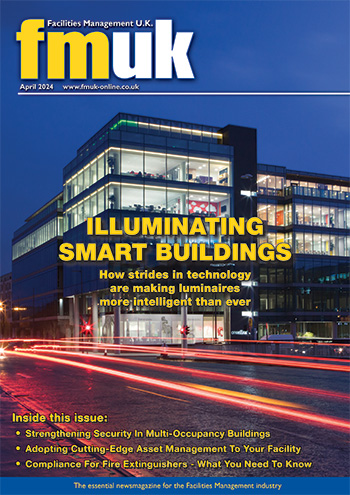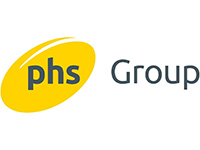Facilitating Change: The Smart Benefits of Going Green
 By Matthew Margetts, Director of Sales and Marketing at Smarter Technologies.
By Matthew Margetts, Director of Sales and Marketing at Smarter Technologies.
The UN Paris Agreement in 2015 aimed to limit the average rise in global temperatures to 2°C above pre-industrial levels, trying to keep the increase below 1.5°C. Since then, the issue of climate change has come to the fore for nations and, by extension, their enterprises.
In 2019, the UK made laws to commit to achieving net-zero emissions by 2050. With an ever-increasing focus on carbon footprints, what should facilities managers be doing now to take advantage of climate change regulations, avoid penalties and taxes, and reduce their carbon footprints?
Changing for climate and COVID
In 2018, Britain’s commercial sector was responsible for 18% of carbon dioxide emissions, just behind homes. According to the UK committee on climate change, it will be primarily up to businesses to deliver on net-zero targets and provide the required investments. One could also argue that the coronavirus pandemic has accelerated the rate of change in the way people view public places, offices and workspaces.
To reduce the spread of COVID-19, facilities managers are looking at ways to redesign workspaces with more space, better air ventilation and use more sustainable materials. Smart facilities managers are also using the opportunity to create greener and more sustainable work environments. Buildings are increasingly embracing what’s known as “biophilic design”. This is the concept of bringing the health benefits of the outdoors indoors, while cutting down on energy consumptions and costs and boosting employee health and productivity.
Changing for cash
And if facilities are not voluntarily working towards low-carbon targets, regulations will force the issue. The Government’s environmental taxes and tax reliefs are there to encourage businesses to operate in a more environmentally friendly way. There are opportunities for organisations to pay less tax by applying for schemes that demonstrate that they are operating more efficiently and producing less damaging waste.
Now is the time to act!
Bearing in mind business’ carbon obligations, associated regulations, and the coronavirus pandemic’s impact, creating more sustainable environments should be high on every facility manager’s list.
The good news is that now is also the time of smart, connected technology, which is making it ever-easier to commit to (and demonstrate) “green” measures. Below are some examples:
Air quality
As demonstrated by numerous new studies, coronavirus outbreaks can be attributed to droplet transmission through the air. With good ventilation and air monitoring solutions, you can observe and monitor your air quality in real time and reduce the spread of infection. IoT-connected air quality monitoring sensors give facilities managers full visibility of the air quality in different areas of the property. Real-time notifications provide immediate alerts if the air is compromised in any way.
Having more control over air-conditioning and HVAC units can also help reduce energy consumption. Occupancy sensors can trigger room temperatures and circulation automatically, instead of leaving systems running unnecessarily. And with more windows being opened for ventilation, it’s important that room controls are adjusted automatically to prevent wastage.
Water quality
The concept of biophilic design often incorporates indoor water features like ponds and waterfalls. It’s important that, along with COVID-19 prevention, water safety remains a priority for facilities managers.
It’s a legal obligation for business premises to demonstrate that they have mitigated any risks associated with legionella bacteria. This includes regular water temperature testing and keeping records for five years – a tedious process if done manually. That’s why many facility managers are looking to automatic flushing and temperature testing systems that can be controlled, managed and reported on remotely.
Along with improved accuracy and saved time, automated flushing and temperature testing also saves water, and thus helps facilities become more energy efficient. With manual testing, every outlet in the building (hot and cold) needs to be run for two minutes to test the temperature, wasting both water and energy. With an automated testing system, thermometers are able to capture accurate temperature readings from pipe sensors and wireless tank temperature sensors.
Smart lighting
According to research published in the Journal of Clinical Sleep Medicine, employees who are exposed to natural light in offices sleep better because the light improves circadian rhythms. Working in a room with natural light also helps boost productivity and mental health.
Allowing natural light in through sunroofs and windows also reduces the need for electric lighting, and thus energy consumption. With smart lighting controls, lights can be dimmed according to the amount of natural light at any given time, ensuring an adequately-lit working environment without wasting energy when it’s not needed.
The colour of the lighting can also be adjusted automatically, providing different colour temperatures to keep the body’s internal clock in line.
As a result, smart lighting not only reduces energy consumption and moves buildings closer to net zero targets, but also leads to greater productivity and a more comfortable environment.
It’s time to act and adapt
It’s simple: businesses that do not adapt will be at risk; those that embrace change will unlock greater opportunities. Lowering the carbon footprint of buildings and creating healthier working spaces is made simpler, smarter and more attainable through IoT connected devices.
Click the article to enlarge it.



























































